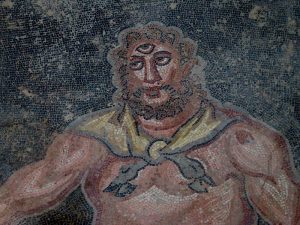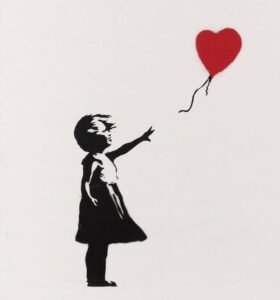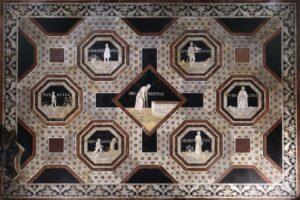Sub-thin according to Marcel Duchamp
4 min read
Marcel Duchamp (1887-1968) the historic painter, intellectual and chess player of the 20th century, author of works such as “The Large Glass” or “Fountain“, is considered one of the most influential and important artists of the last century. He has always tried to destroy the social opinion on many motions of common sense. This constant pursuit of demolition of preestablished schemes, arisen from a disconcerting intransigence, led him to show a painting composed with his own sperm (with the ironic name “Wrong Landscape“). An eclectic thinker who finally came to a concretization of an extraordinary idea applicable also to the present day: the theory to theinfrasottile (inframince).
Before arriving at its effective explanation in sensible reality, it is necessary to define it: although Duchamp eschews any explanation that delimits artistic freedoms, in 1945 he tried to give an example by affirming how it consists in a perception beyond perception itself. ; giving a voluntarily cryptic definition, theinframince is more than an effective and at the same time elusive presence.
Elio Grazioli, in his book “Duchamp beyond photography, strategies of the Infrasottile” (2017) speaks in terms of “the category under which Duchamp brings together all substances, states, minimum differences, shares, changes of state to the limit of the imperceptible and distinguishable, real but not optical, […] which can only be grasped with the gray matter ”. These are basically those phenomena at the limits of perception that often show the transition from one state to another, perceptible only with the mind’s eye.
To complete the definition, Duchamp offers examples: he affirms that “when tobacco smoke also smells from the mouth that emits it, the two smells meet inthe infra“; theinframince is also “the warmth of a chair from which someone has just got up”; and again “the space between the sound of a shot and the appearance of a hole in the target”; and again “the noise or the music produced by a corduroy trousers while you breathe”. Duchamp’s goal was to attempt to portray this subtle in art, but as we can well understand, this theory is undoubtedly applicable to every area of human life.
Duchamp, moreover, affirmed how this concept of inframince could also be related to “qualities and ways of being: the marbled, the world champion […]; then again: time, what takes place at the last moment (the delay), oblivion, the interval […]. “
As far as time’s category is concerned, it turns out infra-thin above all by applying it to our contemporaneity, to our current inevitable shortcomings, mainly because only with the proverbial “hindsight” can we fully understand how many moments of life, passed unconsciously, could have had a greater value, how many single events hide within themselves so many other ultra-sensitive perceptions. In this historical period above all, oppressed by the weight of a pandemic that forces us to shut ourselves up in our homes, we can see how we miss those small, unperceivable moments that have been taken away from us. Probably, the very fact of not being able to enjoy it makes every single infra subtle an insurmountable lack; thus we perceive the lack of situations and moments such as the warmth of a freedom sunny day in the parks, a dinner with friends, or a hug to grandparents without fear.
Eugenio Montale, in a poem belonging to the collection “Le Occasioni” (Einaudi, 1939), recalls the value of time and how it passes quickly without us noticing:
You do not remember the house of the customs-men
on the edge of the steep cliff overhanging the reef:
desolate it has been waiting for you since that evening
when the swarm of your thoughts entered it,
and rested there, restless.
lThe south wind has battered the old walls for years
and the sound of your laughter is no longer happy:
the compass goes veers crazily at random
and the numbers of the dice no longer tally.
You do not remember; another time confuses
your memory; and a thread is wound.
I still hold an end of it: but the house
recedes, and on top of the roof the weathervane,
blackened by smoke, spines pitilessly.
I hold an end of it; but you remain alone
and do not breathe here in the darkness..
Oh the retraining horizon, where
the tanker’s light rarely flares!
Is this the way through? (The breakers seethe
as ever at the plunging cliffs …)
You do not remember the house of this
my evening. And I don’t know who is going and who remains.
The link between time and sub-subtle perceptions becomes evident and how the individual moments, which often seem superficially useless, should be seized when possible, so that we can remember what, above all, collides with our lives and to enjoy what, and once again especially who, decides to stay there.
Source text: https://www.antropia.it/l-infrasottile-secondo-marcel-duchamp/
Poem “The House of the Custom-men” translated by Luciano Repay, from “Italian Poetry: A selection from St. Francisof Assisi to salvatore Quasimodo” (Dover, 1969)

Globetrotter e multipod classe ’90, sono laureata in Lingue e Letterature straniere e coltivo una grande passione per gli scrittori ispanoamericani e angloamericani. Da che ho ricordi scrivo e ho unito la predisposizione alla scrittura all’interesse per lo sport collaborando dal 2009 al 2020 come redattore su testate giornalistiche online e cartacee a tema calcio. Pratico tiro con l’arco e boxe, ho scritto un libro e ho deciso di dedicarmi attivamente all’inclusione in ogni sua declinazione e accezione.







